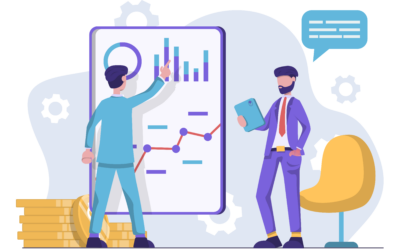How do you get from touchpoint to conversion? As marketing theory tells us, it comes down to identifying the right target market and crafting the best strategy and content to reach and nurture them.
But that’s just the beginning. Once your ad campaign is out there, how do you keep your lead on track, even as they’re besieged by competing offers from other vendors?
In this article, we identify the steps to ensure that the design of your website’s conversion funnel is effective, frictionless, and optimised. And it starts with understanding how your leads behave on and interact with your pages.
- Select the Right Audience
Different types of people will react in various ways to your offer. The best use of your limited resources, therefore, is to focus your campaigns on those that will be most receptive and likely to react favourably to it – that is, those most likely to take a keen interest and buy.
Until you’re 100 percent clear on who your ideal customers are and what their needs are, even the most clever piece of content, product, or promotion you put out will do very little for your business. Conduct market research, look at your website analytics, and analyse your existing sales data, to better understand the demographics, psychographics, and buying habits of your customer base.
Based on your findings, mark out people according to their differences and similarities, and group them into homogenous profiles. They are your buyer personas – a composite of customer qualities that will guide you in creating content that will be sure to resonate, as they move along your conversion funnel all the way to making a purchase.
Once you’ve pinned down your personas, you can utilise methods like the AIDAR model (an update on the classic Attention-Interest-Desire-Action, with the addition of Retention, Relationship-Building, or Reorder, depending on your reference), which is timeless and still quite applicable in the digital environment.
- Map Out the Buying Process
In the age of multichannel and omnichannel marketing, you can expect that not all customers will follow the same buying process. The idea here is not about prescribing a specific funnel for all your visitors; people will often do what makes the most sense for them. Thus, when designing your conversion funnel, you need to be aware of the different paths that your website visitors might take, from the landing page down to the calls to action.
One practical approach might be to work backwards from your end goal. What are the most important objectives on your website? What small interactions might your users make as they move from one step to the next? Known as micro conversions, these may include any number of things on an e-commerce store. As a first step, they may subscribe to your newsletter; after which, they can get to know your brand better as they read your blog articles, and after some time, convinced of the value you offer, trial your product or make a purchase.
At first, these actions might seem inconsequential with no obvious returns. But they are essential in driving conversions, as they work together to teach your visitors about your company and help them become more engaged.
- Attract Qualified Leads
While it might seem tempting to target a large audience with your campaigns, casting a wide net to increase your chances of attracting potential buyers, this is never the most efficient way to spend your advertising budget. Instead, go after high-quality traffic, wherein more of your visitors are likely to convert into customers.
For example, Google Analytics can track referral data and identify the sources of your best traffic. Look at your individual campaigns and see which ones perform best, so you can dedicate your budget to what delivers the most benefits. From there, you can complement your findings with the results of additional tests using a combination of tools.
A/B Testing
A proven technique in advertising, A/B Testing is a fantastic way to optimise for conversion. This is a cost-effective way to test different ideas, without the expense that a full campaign might incur, as you can experiment between different variations of ads or webpages, record clicks and scrolls, and map the exact steps of the audience leading to the sale. Continue tweaking until you can perfect that ‘unicorn content’ and create more of it, in order to generate repeatable results.
Heatmaps
Which parts of your website are getting the most attention? Heatmaps make analysis more interesting by using colours to represent the ‘heat’ of specific metrics. Observe the warm-to-cool spectrum distributed throughout your pages, to see where visitors have been clicking, scrolling, or hovering.
Session Replay
A session replay can capture mouse movements, clicks, typing, scrolling, swiping, or tapping, recording the complete interaction via video session. The idea is to reproduce a user’s interactions exactly or as close as possible to how they actually experienced it, walking you through every step they take in your website or application. This lets you check for any problems with your interface and any hurdles in your conversions.
Forms and Feedback
Tracking and testing need not require advanced technologies or expert skills. As they say, sometimes, the best solution is the most simple one. Want to learn what led a customer to make a purchase? Curious about why a lead dropped off? Why not keep it simple and just ask directly?
Use polls and feedback forms to get the information you need. Combine multiple-choice and open-ended questions and then detect patterns in their responses. If it helps, encourage them with special incentives like promotions or discounts.
Designing your conversion funnel is not a one-time exercise. Customers preferences evolve, new products enter the market, and technology changes all the time, prompting you to review your strategy every now and then, in order to remain competitive.
In this article, we proposed a strategy to better understand and stay focused on your buyers. Digital Excellence has helped some of the biggest e-commerce brands to map out their customer’s journey and streamline their sales processes. Contact us today if you need help designing your website’s conversion funnels to maximise your revenues.





0 Comments